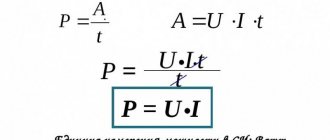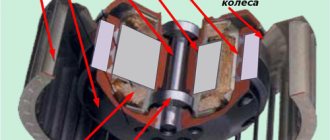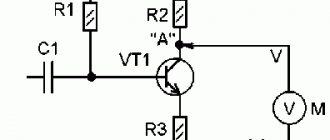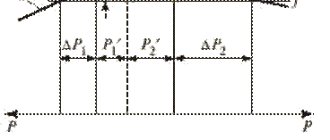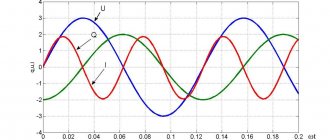A force measuring device, or dynamometer, is a device with which the magnitude of a force or moment of force is measured. Invented more than 200 years ago, it was gradually improved over time, becoming more compact, convenient and accurate. What this device is, what it consists of, how it works, what types there are, will be discussed in this article.
Modern dynamometer
What is a dynamometer?
The device determines the relative power of available or required effort to perform any physical action.
Industrial, medical and consumer devices differ:
- dimensions;
- principle of operation;
- calculation method;
- scale type;
- technical parameters and other characteristics.
A dynamometer is used to measure the strength of a person, unit, machine, etc. The designs and types of such devices vary over a wide technical range. In the International System of Units, force is measured in newtons. Dynamometers, depending on their purpose, are equipped with different scales. Some devices measure the force applied in kilograms. It is common European practice to define force in newtons.
It reflects the amount required for 1 second. change the speed of movement of a solid object weighing 1 kg. This indicator is calculated by the computational link of the dynamometer. Most models for household, industrial and medical purposes use decanewtons or kilograms, which is necessary to unify the obtained values. Newtons are used only in some laboratory and educational dynamometers.
Historical reference
The emergence of the concept of force dates back to the times of the philosophers of Ancient Greece. In particular, Archimedes believed that any body is at rest if it is not influenced by other bodies, that is, the philosopher considered force in statics.
The first definition of this physical quantity from a dynamic position is attributed to Galileo (XVII century), who, unlike Archimedes, believed that the absence of interaction with other objects of the body in question would not change its inertial motion.
The modern concept of force was developed in his works by Isaac Newton. He defined this concept in detail, including it in all the laws of classical mechanics. Thus, Newton determined that the intensity of interaction of absolutely any bodies with a finite mass decreases as the square of the distance (the law of universal gravitation). Only one century later (late 18th century) Henry Cavendish, using a torsion balance, was able to measure the gravitational constant, which was introduced by Newton. For the listed merits of Newton in physics, the unit of measurement of force in the SI system was named after his last name.
In modern physics, the concept of force is used mainly to describe macroscopic objects. In quantum mechanics and particle physics, the concept of “energy” is often used.
Purpose
Compact devices and stationary equipment have different areas of application. Regardless of the technical modification, dimensions and design of the measuring element, all such devices are designed to determine the applied force.
In construction, a dynamometer is used to measure the degree of pressure on the holding frame:
- vertically suspended load;
- concrete slabs;
- various floors;
- external elements of buildings;
- balconies;
- flights of stairs.
Such large-sized equipment is used in the mining industry to determine the force required to destroy rock using a non-explosive method. In industrial production, stationary dynamometers are used to calculate the strength of materials and structures.
Electronic devices that are used in medicine to determine the physiological parameters of muscle fibers are highly accurate. Such devices measure the power indicators of critical components, mechanisms and assemblies.
Industrial Application
In the metalworking industry, similar equipment is used to determine the functional characteristics of press dies. Dynamometers make it possible to determine with relative accuracy the cutting, bending and deformation forces of metal workpieces and products.
One of the purposes of industrial-type devices is to measure the traction capacity of production plants and torque, which are indicated in the technical data sheet of vehicles, engines and other units.
Dynamometers of different types are used in the manufacture of:
- robotic mechanisms;
- space technology;
- military vehicles and installations;
- prostheses;
- implants;
- heat and electric locomotives;
- electronic and analog scales;
- control and measuring equipment for various purposes;
- power units;
- turbines;
- lifting and rigging devices.
Such devices are used in the production of torque wrenches designed for tightening threaded fasteners with a given force. Dynamometers are needed in the production of agricultural and municipal machinery, mining dump trucks and heavy installation equipment.
In construction
Devices and equipment for measuring force are used in the construction of residential complexes and administrative buildings. They are necessary when designing overpasses and transport interchanges.
Dynamometers are designed to measure the load-bearing capacity of building structures, beams and architectural fragments. Such equipment is used in the construction of dams and other hydraulic structures. They have found application in bridge construction, design of Ferris wheels and amusement rides.
In medicine
Any physiological and anatomical parameter of the human body can be accurately assessed in digital terms. For this purpose, specialized medical devices are used.
The dynamometer is used to measure muscle strength and muscle contractions. Devices for medical purposes have a wrist or postural design. There are optical dynamometers that are used to determine the strength of the muscle fibers that support the eye lens.
The use of such monitoring and measuring equipment for medical purposes allows you to accurately:
- Establish the patient's physical condition.
- Determine the speed of recovery after exhaustion, serious illness or injury.
- Assess the dynamics of postoperative rehabilitation.
- Calculate muscle functionality.
- To find out the degree of muscle development in patients with birth defects and genetic pathologies.
Indicators of muscle strength provided by a medical dynamometer vary within a certain range depending on the degree of fatigue of the subject, his age, and gender. Using a dynamometer, the strength of the handshake is determined, which, according to recent scientific data, can be used to determine the functional state of the heart apparatus and predict the risk of an acute cardiac crisis.
An important medical purpose of the device is to assess children's health. Scientists from Baylor University (Texas, USA) found that the functional state of a child’s body can be determined by the strength of the hand’s grip. There is evidence of a relationship between muscle weakness and life expectancy. To determine this parameter, such a measuring device is used.
Types of dynamometers
In accordance with the design of the power unit and the implemented operating principle, electronic, hydraulic and mechanical devices are distinguished. The latter are further divided into spring and lever. There are combined models that combine several operating principles to ensure high accuracy of measurements for various purposes. A special category of dynamometers are diagnostic devices that have their own classification.
Some models are intended exclusively for use in medical institutions, hospitals and physiotherapy offices. There are compact household dynamometers.
The range of such devices is varied and includes dozens of manual options. There are specific devices for single use, called disposable sensors.
They are used to determine the strength of destructive loads - powerful explosions, extreme dynamic pressure, colossal impacts. Before losing integrity and failing, they manage to transmit a signal to a receiving unit located at a safe distance about the characteristics of the destructive impact.
Mechanical models
The simplest and most unpretentious products to use. In a spring-type mechanical dynamometer, the applied force is transferred to a spirally twisted steel wire. Depending on the design features and purpose of the device, the working element is subjected to tension or compression. The recorded indicator of elastic deformation is recorded by the arrow of the measuring scale. The result is considered proportional to the mechanical force.
Dynamometers with a lever instead of a spring are no less common. It is attached to the needle of the measuring scale. The acting force deflects the lever rod or plate by a certain number of units. The recorded value is considered to be indicative of the applied mechanical pressure. Such dynamometers cannot be called very precise measuring instruments.
The simplest and well-known stretching instrument is the cantar or steelyard. This is a manual scale with a spring design. A common example of a lever tool for household use is a torque wrench for cars.
Hydraulic modifications
Devices of this type measure the force of an external influence by moving (pushing) a liquid contained in a special flask. The displaced substance moves through the pipe onto a scale that records its level. A dynamometer is used to measure torque in turboprop engines. Hydraulic models are installed in aircraft equipment for automated feathering of the propeller in the event of a power plant failure.
Such devices are much more accurate than their mechanical counterparts, but have a more complex design. Depressurization of the cylinder with liquid instantly leads to loss of functionality of the device.
Errors in dosage when filling a hydraulic dynamometer have a significant impact on the performance of the device and the accuracy of calculations. In aviation technology, devices are used that are made in the form of several cylinders from a high-strength and heat-resistant composite or metal alloy.
Electronic dynamometers
The design contains a pair of sensors for different purposes. One, considered the main one, converts deformation energy into an electrical impulse. An auxiliary sensor is needed to amplify the signal and record it in RAM.
The electronic unit is:
- inductive;
- piezoelectric;
- vibration-frequency;
- capacitor;
- strain gauge.
Such devices are extremely accurate and maintain synchronization with additional equipment - mechanisms for determining cutting force or wire devices that are used to evaluate resistance. Electronic dynamometers are equipped with a small display and a touch or keypad control panel. The calculated result is displayed as a numerical value and in the form of an oscillogram.
Reference models
This category includes electronic devices with particularly precise calibration. They are used in laboratory practice, for setting up other dynamometers, and on test benches. Reference devices are designed for testing critical components, assemblies and mechanisms. This dynamometer has a force sensor connected to a digital measuring unit. The performance of exemplary models is not affected by environmental conditions.
They are equipped with an integrated self-diagnosis mechanism. Such devices have the function of automatically compensating for lateral loads, preventing them from distorting the value displayed on the display. The dynamometer, which is given the name reference, is used to measure strength indicators with maximum accuracy. Such devices have compact dimensions, resistance to external factors and durability.
They have a user interface, a variety of digital indicators and a port for connecting to a computer. Reference models are compatible with other types of control and measuring equipment, which allows for a comprehensive assessment of the operating parameters of the tested mechanisms and products.
Medical dynamometers
Highly specialized devices designed to test the physiological parameters of the body, performance and endurance of people. Such dynamometers are used in clinical practice and sports medicine. Existing models are wrist and backbone. The former are diagnostic devices for determining the compressive capacity of the upper limbs.
Devices of this class are used to assess the condition or monitor professional suitability in:
- physiotherapy practice;
- sports;
- Ministry of Emergency Situations;
- military units;
- law enforcement agencies;
- companies providing forwarding services;
- transport enterprises.
A separate group consists of children's hand dynamometers. The most common domestic model in this category is DMER-30-0.5. Milling devices have great functionality. They are intended to test the strength of different muscle groups responsible for straightening the body, maintaining balance and stabilizing the spinal column. The most popular model of deadlift dynamometers is DS-500.
How to test impact force at home
When honing your fighting skills, you need to track your progress. Of course, it is best to do the test in the gym. But a general idea of physical fitness, speed and impact power can be obtained at home.
Impact speed
Impact speed is no less important than force. After all, even if a person has a huge, “iron” fist, if the blow is slow, there is no point. Speed enhances the punch and helps catch your opponent off guard. A fairly simple exercise will help you find out the speed of impact.
To test you will need a tennis ball. We take it in the non-hitting hand and squeeze it. Then we extend our arm forward. We bring the tested hand to the chin (stand in a stance). Hands should be on the same line. Have a family member or friend count to three. And on the count of three, you open your fist and grab the ball with your other hand as quickly as possible. If the speed is excellent, then you catch the ball on the same line on which it was released. However, it should not fall below 7-10 cm.
Explosive force
Not everyone understands what explosive impact power is. This is how quickly you will reach top speed. A very important indicator, since it determines whether the opponent will fall from the blow or have time to dodge.
To measure, we again take a regular tennis ball. We throw it in the air and immediately hit it with the other hand. Now let's measure:
- 5-10 meters - Low force.
- 10-16 meters - Average.
- More than 16 meters - High.
You can train explosive strength in the same way. And after a while, check the results again.
Total impact power
There is another test. It shows the overall power of the blow. It is often used in training airborne forces. To do this you will need a transparent plastic bag (with handles).
The bag needs to be hung with threads by two handles at chin level. Then you need to stand up and strike in the center
It is very important that the blow does not go down. The goal is to tear the package
If the package just breaks, the blow is not strong enough, there is no good speed, there is no explosive power.
Why is it necessary to know strength indicators?
Such devices have virtually unlimited applications. Manufacturers of various equipment indicate the results obtained with their help in technical documentation. Measuring power and load capabilities allows you to predict the service life and determine the operational life of a machine, component or unit. On this basis, rules for the use of products and their service are established.
The data obtained using dynamometers is used in engineering calculations and design work. Such information is of key importance during the construction of buildings and bridges, hydraulic engineering and other structures. Using established strength indicators and load capacities, they ensure the safety of road traffic, manned flights, operation of mechanisms and equipment, and park attractions.
In medicine, data obtained using such devices is necessary for choosing therapeutic tactics, methods and means of rehabilitation. For professional athletes, dynamometer analysis allows them to evaluate the effectiveness of training and make the necessary adjustments to accelerate progress.
Content
In this lesson we will get acquainted with a new device called a dynamometer. It can be used to measure the force acting on a body.
A dynamometer is a device for measuring force.
The word "dynamometer" is derived from two Greek words: "dynamis" - force and "metreo" - measure.
Let's consider the simplest type of dynamometer - spring. This will help us understand the operating principle of the device. Its main part is a steel spring .
It is not difficult to guess that if you hang a load on a spring, it will stretch. In other words, the observer sees that a force is acting on a suspended body and can determine its magnitude.
Factors that influence strength performance
Electronic devices are considered the most accurate. Their measurements are virtually unaffected by environmental factors. The results of medical examinations are influenced by the time of day and the patient’s physical fitness. The lowest muscle strength is recorded in the morning and evening hours. At midday, this physiological indicator reaches its peak value.
The amount of muscle strength is affected by the psycho-emotional state at the time of the test. Sleep disorder, nutrient deficiency in the body, vitamin and oxygen starvation reduce muscle activity and reduce the indicators obtained by measuring with such a device. Mechanical dynamometers are considered the least accurate.
The level of error in calculations of such devices is influenced by a large number of external and design factors:
- ambient temperature;
- air humidity and density;
- degree of wear of parts;
- backlashes;
- build quality;
- power block manufacturing material;
- spring properties of steel, which change during operation.
A dynamometer is used to measure the strength capabilities of a mechanism, building structure or human body. In the latter case, the obtained values decrease with insufficient physical activity and muscular dystrophy.
Operating principle of a dynamometer
Mechanical models are considered the simplest in design and operating principle. In spring modifications, a force to be measured is applied to the elastic part. It causes deformation changes - stretching or compression. This activates a pointer attached to the spring, which moves along the scale, recording the amount of force applied. Lever and hydraulic dynamometers have a similar operating principle.
In the latter, the role of a deformable element and, at the same time, a recording device is played by a liquid pushed out by the applied force. In lever models, a moving part changes position under external pressure. The lever moves the arrow attached to it by a certain number of scale divisions. Due to their accuracy and versatility, strain gauge devices have become widespread.
Such devices are capable of recording dynamic and static loads. Its design includes a measuring element of increased elasticity and several strain gauge grids. The applied force causes deformation changes, which lead to an imbalance of the resistance bridge currents. As a result, an electrical impulse is generated, captured by a special sensor and displayed on the display as a digital value.
Induction models, designed for testing power units with power up to 966 hp, are distinguished by a fundamentally different mechanism of action and low inertia. The design of such devices includes a polished metal disk that is influenced by electromagnetic forces. It turns around at a set speed, generating current vortices, the magnitude of which is recorded by a tensor sensor.
The dynamometer is used to measure static load indicators. For this purpose, devices with a piezoelectric operating principle are used. The structural structure of such devices includes a special plate.
It is based on quartz with defect-free areas. The mineral has a direct or inverse piezoelectric effect. A charge is formed by mechanical action on a quartz plate. The type of electrical reaction is determined by the position of the cut relative to the axial lines of the crystals. A special converter transforms the charge into voltage. Devices of this class are used to assess the impact power.
To measure pressure during grinding, milling and other types of metalworking, control tools with a wire indicator are used. Their design includes a square plate made of a durable and elastic alloy. It is attached to the inner surface of the case with spring links made of a special grade of steel. The device allows you to measure horizontal and radial force with high accuracy.
The pressure exerted on the plate is recorded by the reading unit, which displays it on the display. The sensor accurately captures the vibration pattern of the part on the elastic fasteners and converts them into digital values.
Methods for mounting vibration sensors
The following methods of attaching vibration sensors ():
- using a hairpin;
- adhesive joints, including fastening with beeswax;
- use of intermediate elements;
- using magnets;
- using a probe.
Figure 82 – Methods of mounting vibration sensors
Stud mounting on a smooth, flat surface is preferred. The measurement site is pre-prepared (). A hole is drilled, a thread is cut, and the surface is polished. The following requirements are met:
- the depth of the threaded hole must be sufficient so that the pin does not rest against the bottom of the hole in the base of the sensor;
- surface roughness no more than 1.6...0.25 Rz;
- non-perpendicularity of the axis of the threaded connection to the plane of fastening of the converter is not more than 0.02%;
- non-flatness of the mounting surface 0.01%;
- torque when attaching the sensor to the M4...M8 stud is 1.7...2 Nm.
Figure 83 – Requirements for the installation location of the sensor using a stud
The surface of the object must be smooth and clean. A layer of grease is applied to the working surface of the sensor, which increases the rigidity of the mechanical connection between the sensor and the measurement object and creates good contact between the surfaces.
The amplitude-frequency response of a piezoelectric sensor mounted with a steel pin on a smooth surface of an object is shown. In this case, the resonant frequency of the piezoelectric sensor is almost identical to the resonant frequency obtained during calibration by the manufacturer (approximately 33 kHz).
Disadvantages: a lot of time is spent on installing the sensor and the need for plumbing work.
An alternative method of attaching piezo sensors is to attach them to a thin layer of beeswax, using glue, cement, and others. The resonant frequency decreases slightly (). This fastening method is applicable at room temperature of the object’s surface and low vibration amplitude.
The disadvantages of this fastening method are the softening of wax or glue with increasing temperature (permissible temperature +35...40 ° C) and the unreliability of fastening massive sensors, especially in a measurement direction other than vertical. Mounting the sensor with beeswax on a smooth, clean surface when measuring vibration in the vertical direction can be considered acceptable for sensors weighing no more than 20 g with vibration acceleration amplitudes of up to 100 m/s2.
The use of intermediate elements - plates, disks - leads to distortion of the perceived signal at high levels due to mechanical filtering and a decrease in the resonant frequency due to the increased compliance of the system.
In cases where it is necessary to ensure strong fastening of the accelerometer without disturbing the surface of the object with threaded holes, special pins are used, fixed to a flat disk (intermediate elements) attached with hard glue or cement. Epoxy resins and cyanoacrylic adhesives are recommended as gluing materials. An insulated pin and mica washer are used where electrical isolation of the accelerometer from the object is required.
The most widely used method is to attach sensors to a smooth surface of an object using a permanent magnet. In this case, the static force of adhesion of the magnet to the measuring surface largely affects the measurement range. This determines the need to use neodymium magnets with a force of 30...50 N. The requirements for surface treatment are the same as for connections using a pin. Magnetic mounting () reduces the measured frequency range to 5000 Hz. The resonant frequency in this case decreases to approximately 7 ... 15 kHz and depends on the type of magnet.
Figure 86 – Amplitude-frequency response of a vibration sensor when attached with a magnet
Vibration measurement using a probe, reduces the upper frequency range () to 1000 Hz. The angle between the measuring axis of the vibration sensor and the measuring direction must not exceed 25°.
Specifications
They depend on the type, functionality and scope of application of the device. The most common domestic models of dynamometers are the DK series.
These simple, but accurate and reliable mechanical devices have the following technical characteristics:
| Parameter | Meaning |
| Calculation range | 3-140 decanewtons (daN) |
| Level of error | 0.75-4 daN |
| Scale pitch | 0.5-2 daN |
| Weight | 170-250 g |
Electronic copies are more diverse and functional. They have an extended range of measured indicators - 2-120 decanewtons. The discreteness (level of error) for most of these devices does not exceed 0.5 daN. Electronic dynamometers automatically turn off after a time specified in the settings if there is no user activity. They can withstand temperatures of +10...+35°C without errors in calculations.
Medical diagnostic equipment of the stand type has a maximum value of up to 500 decanewtons. Such devices are equipped with a large scale with a division value of 2-5 daN. Such devices make it possible to diagnose early manifestations of scoliosis and postural disorders in children.
Dynamometer in everyday life
With a steelyard you can quickly measure the weight of hand luggage, household items and food products. Despite the advent of high-precision electronic scales, cheap and convenient pocket dynamometers are still actively used in everyday life.
More structurally complex devices in everyday life are used to measure the force of closing elevator doors and passenger transport:
- buses;
- trolleybuses;
- trams;
- subway cars.
There are home instruments designed to assess the degree of ripeness of fruits. The operation of the tonometer is based on the dynamometer principle. Such a device will be needed if it is necessary to find out the weight of substances in different states - liquid, bulk, dry.
Dynamometers are useful when performing installation and construction work and apartment renovation. They are used to evaluate the lifting force of car windows. Mechanical devices are used in everyday life to measure the closing force of hatches and sliding garage doors.


